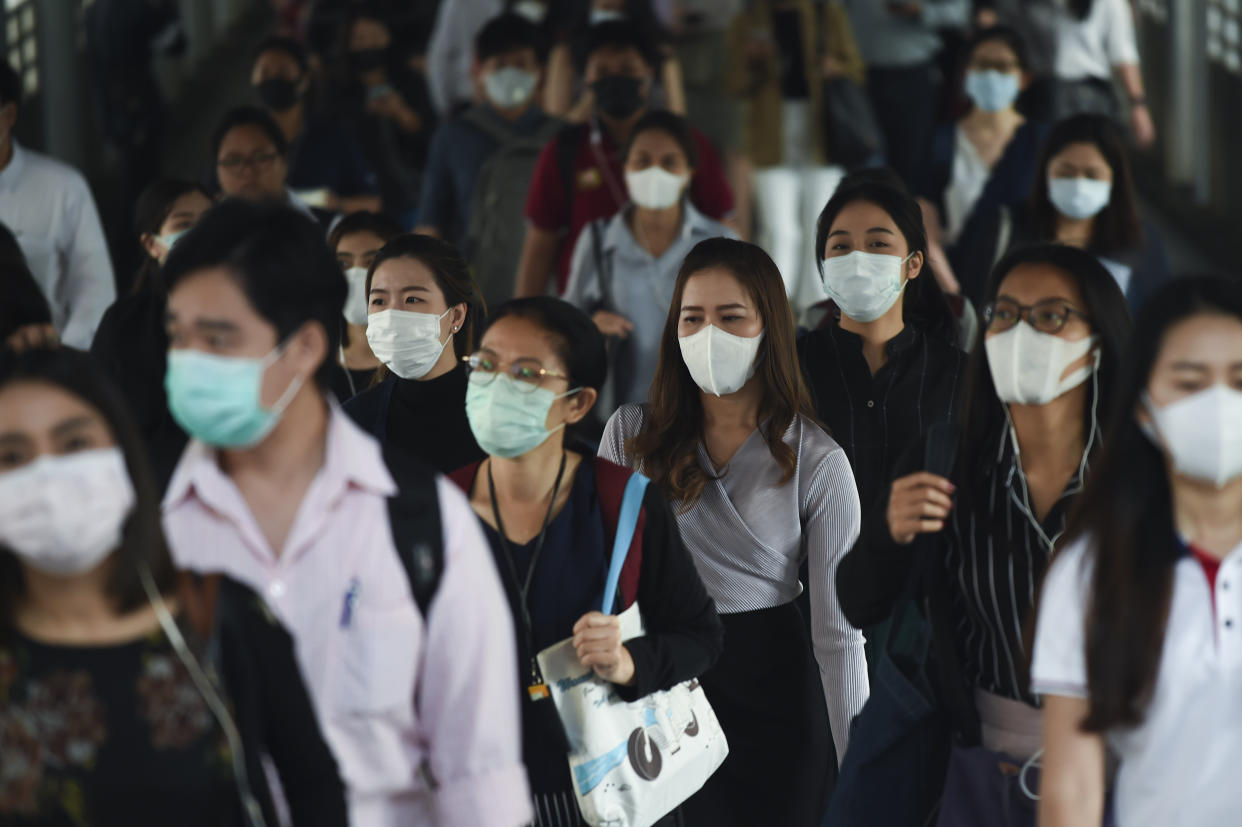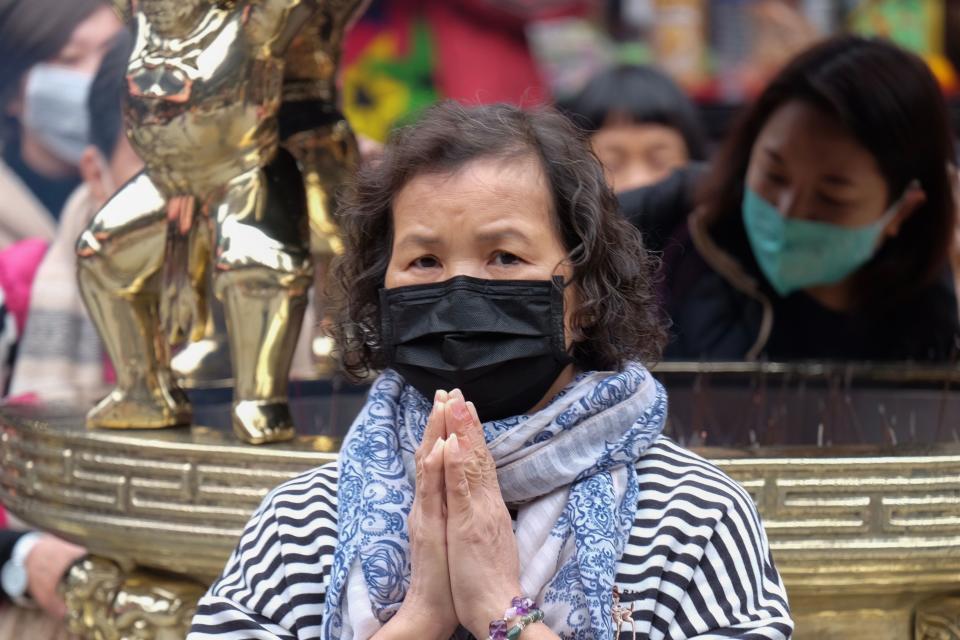China's coronavirus is 'spreading quicker than Sars'

China’s deadly coronavirus has sparked fear all over the world.
The death toll reached 106 on Monday, with the number of cases almost doubling in just one day to more than 4,500, the BBC reported.
READ MORE: How did China's coronavirus outbreak start?
Since starting in the city of Wuhan - capital of Hubei province - at the end of last year, the new strain has spread throughout China and crossed national borders to at least 16 countries.
With it infectious before symptoms develop, one expert fears the virus may be more contagious than severe acute respiratory syndrome (Sars).
Sars, also in the coronavirus class, killed 774 people across dozens of countries during its 2004 outbreak.
When it comes to the new strain - 2019-nCoV - scientists from Imperial College London estimated each sufferer in China infected between 1.5 and 3.5 people up to January 18.
This led them to believe more than 60% of transmissions need to be prevented to control the outbreak.
Speaking at the time, Professor Mark Harris - from the University of Leeds - said: “One positive spin is if we are only aware of 5% of the total cases.
“The implication is 95% of cases have only resulted in either mild symptoms such that the infected people did not consider it serious enough to seek medical help or indeed the virus may be causing an inapparent infection.
“This would significantly reduce the apparent mortality and morbidity rates.”
A team from the University of Oxford predicted if a virus-ridden person were to arrive in the UK, there is more than a one-in-three chance they will pass it on.
2019-nCoV is thought to have emerged from a seafood and live animal market in Wuhan, with all those who initially fell ill working - or visiting - there.
Constantly-evolving viruses can “jump” from one species to another, with current thinking being it may have spilled over from bats to snakes and finally humans.
READ MORE: Who is most likely to catch China's coronavirus?
“If the virus is able to spread before symptoms show, that could certainly explain why the virus is spreading quicker that Sars,” Dr Robin Thompson, from the University of Oxford, told New Scientist.
“Sars took several months to cause a thousand cases.
“This has caused [almost] 3,000 cases in three weeks.”
Virtually unheard of a month ago, there is still much we do not know about the pathogen’s symptoms, transmission or death rate.
“Virus transmission occurs when there is a high enough level of virus in the blood and body secretions of an infected person to another,” Professor David Heymann, from the London School of Hygiene & Tropical Medicine, said.
“Some infections can be passed from one human to another a few days before symptoms occur because there are high levels of virus and the virus then causes disease symptoms.
“This depends on how the virus is transmitted and that is not fully understood at present.
“It is known this virus can pass from one to another through close physical contact, and more and more evidence suggests it can be passed by droplets that spread face-to-face by a cough or sneeze directly on the face from one to another, as was Sars.”
Based on data collected between January 10 and 21, scientists from the Chinese University of Hong Kong estimate each patient could pass the virus onto between three and five people.
“These are worryingly high numbers and support the rapidly increasingly numbers of infections,” Professor Bill Keevil, from the University of Southampton, said.
Coronaviruses as a class are not new.
Six strains are known to infect humans, with 2019-nCoV being the “seventh”.
Most people will catch a coronavirus at some point, with strains triggering mild common colds.
As well as Sars, the Middle East respiratory syndrome (Mers) is also a coronavirus, which kills between three and four in every 10 infected, according to the Centers for Disease Control and Prevention (CDC).
Genetic analyses suggest 2019-nCoV is more similar to Sars than any other coronavirus.
Based on existing data, the new coronavirus appears to have around a 2% death rate, which puts it on par with Spanish flu fatalities in the UK in 1918.
Professor Peter Horby - from the University of Oxford - pointed out, however, this is based on hospital cases, which are by definition severe and require ventilation.
There may be milder, undiagnosed cases in the community.
Sars had a death rate of 9.6%, but may not have spread as quickly, New Scientist reported.
The outbreak was brought under control by “quarantining” patients and screening aeroplane passengers.
Like all coronaviruses, 2019-nCoV causes flu-like symptoms, including fever.
Yahoo UK reported it typically takes around five days for symptoms to come on, resulting in newly-infected passengers potentially “slipping through the net” at airport screenings.
The World Health Organization held off declaring 2019-nCoV a global health emergency of international concern last week “given its restrictive and binary nature”.
It added, however, the outbreak is “very high risk in China, and a high risk regionally and globally”.

How does the new coronavirus kill? How is it treated?
Victims of the new coronavirus are said to be dying from pneumonia.
This comes about when a respiratory infection causes the alveoli (air sacs) in the lungs to become inflamed and filled with fluid or pus, according to the American Lung Association.
The lungs then struggle to draw in air, resulting in reduced oxygen in the bloodstream.
“Without treatment the end is inevitable,” said the charity Médecins Sans Frontières.
“Deaths occurs because of asphyxiation.”
READ MORE: What are the symptoms of China's coronavirus?
The CDC has warned there is no specific treatment for coronaviruses.
If the infection triggers pneumonia, doctors work to combat the complication.
When a virus is to blame – like 2019-nCoV – pneumonia may be treated via “antiviral medication”, according to the American Lung Association.
Professor Horby claims, however, there is “no effective anti-viral”, with treatment being “supportive”.


